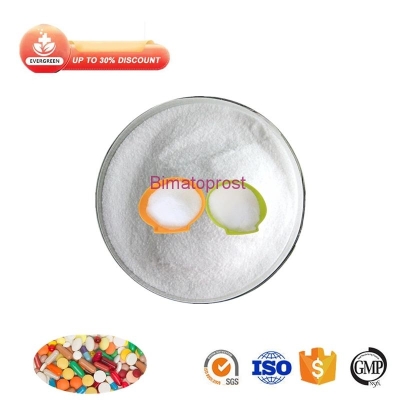-
Categories
-
Pharmaceutical Intermediates
-
Active Pharmaceutical Ingredients
-
Food Additives
- Industrial Coatings
- Agrochemicals
- Dyes and Pigments
- Surfactant
- Flavors and Fragrances
- Chemical Reagents
- Catalyst and Auxiliary
- Natural Products
- Inorganic Chemistry
-
Organic Chemistry
-
Biochemical Engineering
- Analytical Chemistry
- Cosmetic Ingredient
-
Pharmaceutical Intermediates
Promotion
ECHEMI Mall
Wholesale
Weekly Price
Exhibition
News
-
Trade Service
Background: Diabetic sensorimotor polyneuropathy (DSPN) and cardiovascular autonomic neuropathy (CAN) are important contributors to increased morbidity and mortality and decreased quality of life in patients with diabetes
.
About 30% of people with diabetes are affected by DSPN
Diabetic sensorimotor polyneuropathy (DSPN) and cardiovascular autonomic neuropathy (CAN) are important contributors to increased morbidity and mortality and decreased quality of life in patients with diabetes
Current options for the treatment of peripheral or autonomic manifestations of diabetic neuropathy are limited and primarily based on symptomatic treatment
There is evidence for the role of exercise training (ET) in the treatment of DSPN and CAN
It is well known that regular aerobic ET may be beneficial to affect cardiovascular indicators in healthy individuals, including sympathovagal balance, resting heart rate, and blood pressure
METHODS: Cardiovascular autonomic and somatosensory neurological assessments were performed on overweight men with type 2 diabetes (type 2 diabetes mellitus, n=20) and men with normal glucose tolerance (normal glucose tolerance [NGT], n=23) of similar age and body mass index.
Functional and intraepidermal nerve fiber density (IENFD) measurements were performed, and as a control group, a 12-week high-intensity interval training (HIIT) intervention was performed
.
Study endpoints included clinical scores, nerve conduction studies, quantitative sensory testing, IENFD, heart rate variability, postural systolic blood pressure changes, and spontaneous baroreflex sensitivity (BRS)
Results: After 12 weeks of HIIT treatment, resting heart rate decreased in both groups (baseline/12 weeks: NGT: 65.
1±8.
2/60.
2±9.
0 beats/min; type 2 diabetes: 68.
8±10.
1/63.
4±7.
8 beats/min) , while the three indicators of BRS were increased (sequence analysis BRS: 8.
82±4.
89/14.
6±11.
7MS2/mm Hg; positive sequence BRS: 7.
19±5.
43/15.
4±15.
9MS2/mm Hg; negative BRS: 12.
8±5.
4/ 14.
6±8.
7MS2/−) and postural systolic blood pressure changes decreased (−13.
9±11.
6/NGT 9.
35±9.
76), and both heart rate variability indicators were significantly increased (RR interval standard deviation: 36.
1±11.
8/55.
3±41.
3ms; Variation coefficient of RR interval: 3.
84±1.
2 1/5.
17±3.
2 8) (all P<0.
0 5)
.
In contrast, BMI, clinical scores, nerve conduction studies, quantitative sensory testing, IENFD, and the prevalence of diabetic sensorimotor polyneuropathy and cardiovascular autonomic neuropathy remained unchanged in both groups
Table 1 The function and morphology of peripheral and autonomic nerves before and after 12 weeks of hypoxia-ischemia
Table 1 The function and morphology of peripheral and autonomic nerves before and after 12 weeks of hypoxia-ischemiaFigure 1 Improved cardiovascular autonomic function index from baseline to 12 weeks in either or both groups
.
Blue circles, type 2 diabetes (T2D); white circles, NGT
Figure 1 Improved cardiovascular autonomic function index from baseline to 12 weeks in either or both groups
Figure 2 Baroreceptor reflex function after 12 weeks of HIIT
.
Blue circles, type 2 diabetes (T2D); white circles, NGT
Figure 2 Baroreceptor reflex function after 12 weeks of HIIT
In the absence of weight loss, BRS, resting heart rate, and orthostatic blood pressure regulation were improved in overweight male individuals with type 2 diabetes after 12 weeks of regular HIIT
.
Since no favorable effects on somatic neurological function and structure were observed, cardiovascular autonomic function appears to be more susceptible to this short-term intervention, possibly due to improved cardiorespiratory function
.
Original source: Bönhof GJ, Strom A, Apostolopoulou M, et al.
High-intensity interval training for 12 weeks improves cardiovascular autonomic function but not somatosensory nerve function and structure in overweight men with type 2 diabetes.
Diabetologia 2022 Mar 11
Leave a comment here







